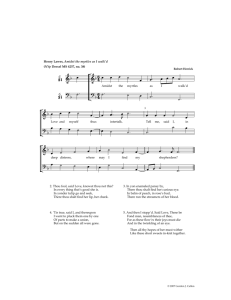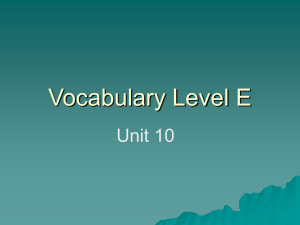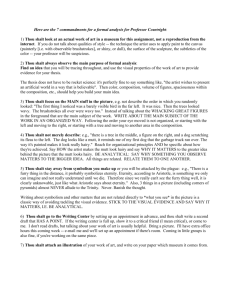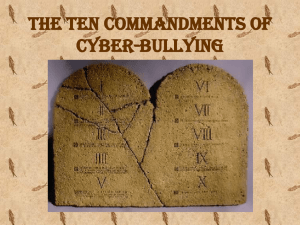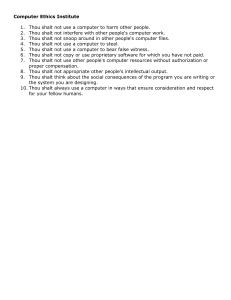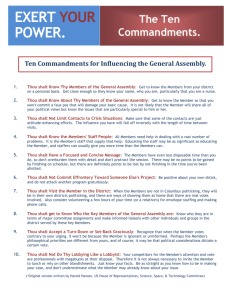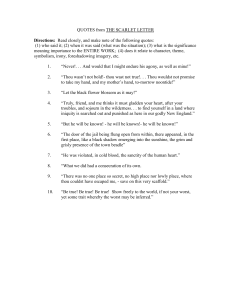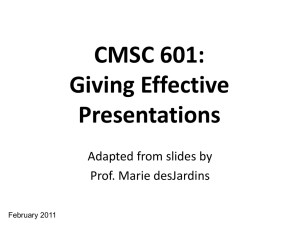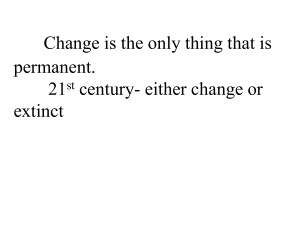Calvin Lin
advertisement
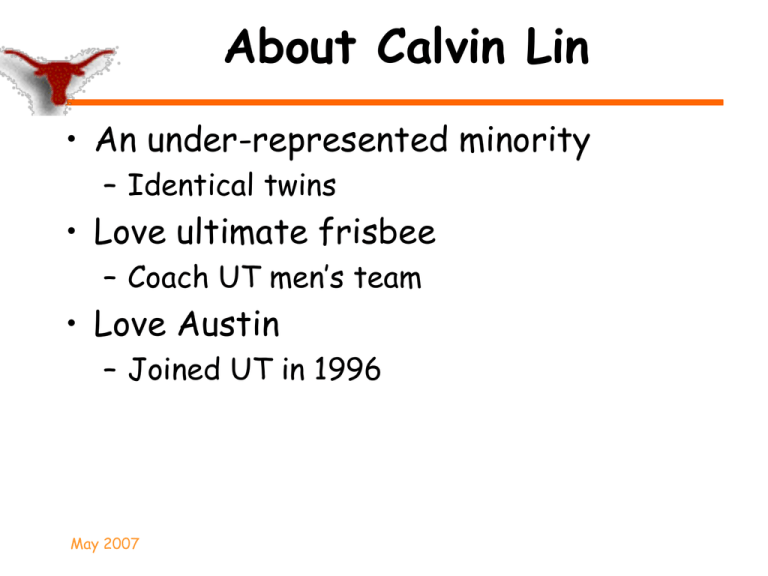
About Calvin Lin • An under-represented minority – Identical twins • Love ultimate frisbee – Coach UT men’s team • Love Austin – Joined UT in 1996 May 2007 About Calvin Lin • Love my family – Wife Mary, 9 month old Emmett • Love the undergraduates – Director of Turing Scholars Honors Program • Love research – Mainly in compilers, dabble in microarchitecture May 2007 How to Give a Bad Talk Mike Dahlin, John Ousterhout, Tom Anderson, Dave Patterson, ... (Channeled by Calvin Lin) May 2007 I. Thou Shalt Not Illustrate Clients xFS BW NFS BW 1 5.71995e+05 1.65997e+06 8 4.425325e+06 1.19731e+06 16 1.095445e+07 7.88792e+05 32 1.38927e+07 4.70548e+05 Bandwidth 16 MB/s xFS 8 MB/s 0 MB/s 0 NFS 15 30 Clients •Table: – Precision – Allow Audience to Draw on Conclusions •Pictures: – Confucius: “Picture = 1000 Words” – Dijkstra: “Pictures are a crutch for weak minds” •Who are you going to believe? May 2007 II. Thou Shalt Not Covet Brevity •Do not omit technical material from your paper – – You did the work; it is important; make sure the audience understands all nuances of approach and also how smart you are Many in audience will never read the paper – they *must* leave the room fully understanding your approach, motivation, and contributions! •Include lots of material in each slide – Avoid sentence fragments because they may make you look illiterate. • • Also, if the slides have full sentences, then you can read the slides verbatim and the audience will be able to follow along. All points you make orally should also be on the slide, and vice versa. Some may say that no item on a slide should span more than one line. Ignore this! Take as much room as you need to make your point. Take advantage of technology – small fonts allow you to provide information-rich slides. • Make several points on each slide. • • – – Fonts smaller than 24 point are fine And the important people sit in front anyhow! •Include lots of slides in each talk – – 1 Lampson = 1 slide per second Impress audience with intensity and difficulty of material – Avoid moving content to “backup slides” • • They should leave knowing that you did a lot of work and that it was hard, even if they don’t understand all of the details. You probably won’t get a chance to show many of them May 2007 II. Thou shatl Not be Neat 250 200 150 System A System B System C 100 50 0 10 20 30 40 50 •Slide layout << ideas! 60 70 80 90 100 – “I’m a doctor, Jim, not a graphic designer.” – spelling checker = waste of time • don’t worry about consistent capitalization • Or structure/bullet/etc consistency – Use color and fonts to emphasize key ideas •Who cares what 50 people think? May 2007 IV. Thou Shalt Cover Thy Naked Slides • Keep audience on your point • Surprise them with your train of thought – If they know the point before you make it – They may think – That they could have figured it out • For themselves – Will they realize • How clever you are? • Advanced techniques May 2007 V. Thou Shalt Remain Humble and Demure •No eye contact – Bonus: Help avoid questions •Do not distract with motion – Keep arms at side – Stay at podium •Avoid rhetorical flourishes – Keep voice level • Avoid raising voice on key point • Avoid pause – Do not ask rhetorical questions – Do not use humor •Key tool of the trade – Laser May 2007 pointer VI. Thou Shalt Not Emphasize Key Points • Do not introduce talk/talklet/slide – Cover more technical material • Do not structure slide – All points are important – Graphs should speak for themselves • Do not summarize talk/talklet/slide – Audience should pay attention May 2007 VII. Thou Shalt Not Skip Slides in a Long Talk •You did the work – The research • And prepared the slides – Audience will be interested in seeing them •Audience can stay longer – Your work much more interesting • Than the next speakers • Than the break • Than lunch •If necessary, skip conclusions – Just repeating points you’ve already made May 2007 VIII. Thou Shalt Not Plan for Q&A •Keep answers spontaneous •No such thing as dumb question – Just dumb questioner – Whose fault is it they don’t understand? – Universal answer: • Dismiss question as irrelevant/naïve – Everyone remembers a good argument • Good publicity for paper •Approach – Don’t repeat question – Start talking quickly – Don’t cut discussion short – When May 2007 in doubt, bluff IX. Thou Shalt Not Walk In Others’ Shoes • You are the expert – You’ve been working on project for years – Anyone could present dumbed down version – Audience’s chance to hear the expert view • Don’t worry if part of talk “drags” – Present all technical details May 2007 X. Thou Shalt Not Practice •Benefits – Practice wastes Hours • Out of several years of research – Ensures spontaneity •If you do practice – Argue suggestions – Make talk longer than allotted time – Audience: • Experts only (e.g., advisor and group) – 1 Week is plenty • Converge on content by last practice (Night before presentation) •Most Important Commandment! May 2007 Alternatives to a Bad Talk A few opinions Questions? May 2007

